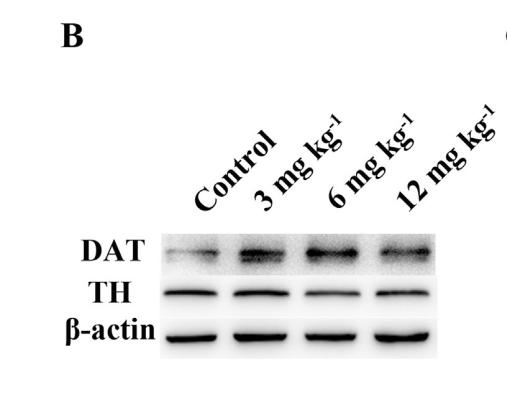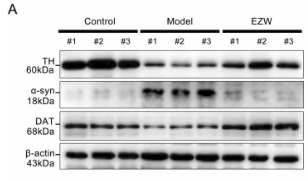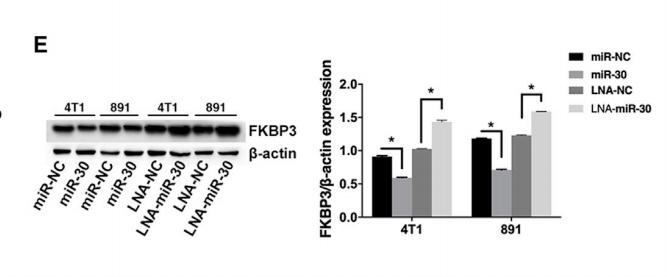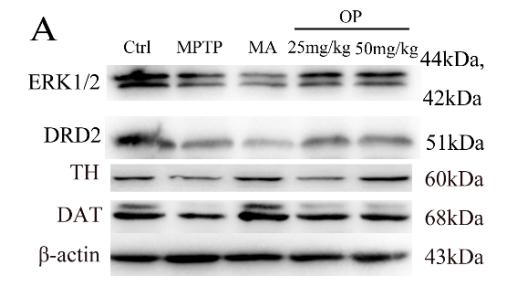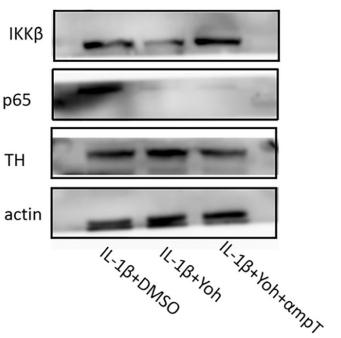Tyrosine Hydroxylase Antibody - #AF6113
| Product: | Tyrosine Hydroxylase Antibody |
| Catalog: | AF6113 |
| Description: | Rabbit polyclonal antibody to Tyrosine Hydroxylase |
| Application: | WB IHC IF/ICC |
| Reactivity: | Human, Mouse, Rat |
| Prediction: | Dog |
| Mol.Wt.: | 60kDa; 59kD(Calculated). |
| Uniprot: | P07101 |
| RRID: | AB_2834999 |
Product Info
*The optimal dilutions should be determined by the end user.
*Tips:
WB: For western blot detection of denatured protein samples. IHC: For immunohistochemical detection of paraffin sections (IHC-p) or frozen sections (IHC-f) of tissue samples. IF/ICC: For immunofluorescence detection of cell samples. ELISA(peptide): For ELISA detection of antigenic peptide.
Cite Format: Affinity Biosciences Cat# AF6113, RRID:AB_2834999.
Fold/Unfold
Dystonia 14; DYT14; DYT5b; EC 1.14.16.2; OTTHUMP00000011225; OTTHUMP00000011226; ple; Protein Pale; TH; The; TY3H_HUMAN; TYH; Tyrosine 3 hydroxylase; Tyrosine 3 monooxygenase; Tyrosine 3-hydroxylase; Tyrosine 3-monooxygenase; Tyrosine hydroxylase;
Immunogens
- P07101 TY3H_HUMAN:
- Protein BLAST With
- NCBI/
- ExPASy/
- Uniprot
MPTPDATTPQAKGFRRAVSELDAKQAEAIMVRGQGAPGPSLTGSPWPGTAAPAASYTPTPRSPRFIGRRQSLIEDARKEREAAVAAAAAAVPSEPGDPLEAVAFEEKEGKAVLNLLFSPRATKPSALSRAVKVFETFEAKIHHLETRPAQRPRAGGPHLEYFVRLEVRRGDLAALLSGVRQVSEDVRSPAGPKVPWFPRKVSELDKCHHLVTKFDPDLDLDHPGFSDQVYRQRRKLIAEIAFQYRHGDPIPRVEYTAEEIATWKEVYTTLKGLYATHACGEHLEAFALLERFSGYREDNIPQLEDVSRFLKERTGFQLRPVAGLLSARDFLASLAFRVFQCTQYIRHASSPMHSPEPDCCHELLGHVPMLADRTFAQFSQDIGLASLGASDEEIEKLSTLYWFTVEFGLCKQNGEVKAYGAGLLSSYGELLHCLSEEPEIRAFDPEAAAVQPYQDQTYQSVYFVSESFSDAKDKLRSYASRIQRPFSVKFDPYTLAIDVLDSPQAVRRSLEGVQDELDTLAHALSAIG
Predictions
Score>80(red) has high confidence and is suggested to be used for WB detection. *The prediction model is mainly based on the alignment of immunogen sequences, the results are for reference only, not as the basis of quality assurance.
High(score>80) Medium(80>score>50) Low(score<50) No confidence
PTMs - P07101 As Substrate
| Site | PTM Type | Enzyme | Source |
|---|---|---|---|
| T3 | Phosphorylation | Uniprot | |
| S19 | Phosphorylation | Q8IW41 (MAPKAPK5) , P49137 (MAPKAPK2) , Q9UQM7 (CAMK2A) | Uniprot |
| S40 | Phosphorylation | P49137 (MAPKAPK2) , P51812 (RPS6KA3) , O75582 (RPS6KA5) | Uniprot |
| S62 | Phosphorylation | P28482 (MAPK1) , P27361 (MAPK3) | Uniprot |
| S71 | Phosphorylation | P49137 (MAPKAPK2) , P51812 (RPS6KA3) , P17612 (PRKACA) , Q9UQM7 (CAMK2A) | Uniprot |
| S118 | Phosphorylation | Uniprot | |
| Y230 | Phosphorylation | Uniprot | |
| Y419 | Phosphorylation | Uniprot | |
| S502 | Phosphorylation | Uniprot |
Research Backgrounds
Plays an important role in the physiology of adrenergic neurons.
Mainly expressed in the brain and adrenal glands.
Belongs to the biopterin-dependent aromatic amino acid hydroxylase family.
Research Fields
· Human Diseases > Neurodegenerative diseases > Parkinson's disease.
· Human Diseases > Substance dependence > Cocaine addiction.
· Human Diseases > Substance dependence > Amphetamine addiction.
· Human Diseases > Substance dependence > Alcoholism.
· Metabolism > Amino acid metabolism > Tyrosine metabolism.
· Metabolism > Metabolism of cofactors and vitamins > Folate biosynthesis.
· Metabolism > Global and overview maps > Metabolic pathways.
· Organismal Systems > Nervous system > Dopaminergic synapse.
· Organismal Systems > Endocrine system > Prolactin signaling pathway. (View pathway)
References
Application: WB Species: Mice Sample: striatum tissue
Application: WB Species: Mouse Sample:
Application: IHC Species: rat Sample: hippocampus
Application: WB Species: mouse Sample: striatal
Application: WB Species: mouse Sample: striatum
Application: WB Species: Mice Sample:
Restrictive clause
Affinity Biosciences tests all products strictly. Citations are provided as a resource for additional applications that have not been validated by Affinity Biosciences. Please choose the appropriate format for each application and consult Materials and Methods sections for additional details about the use of any product in these publications.
For Research Use Only.
Not for use in diagnostic or therapeutic procedures. Not for resale. Not for distribution without written consent. Affinity Biosciences will not be held responsible for patent infringement or other violations that may occur with the use of our products. Affinity Biosciences, Affinity Biosciences Logo and all other trademarks are the property of Affinity Biosciences LTD.

